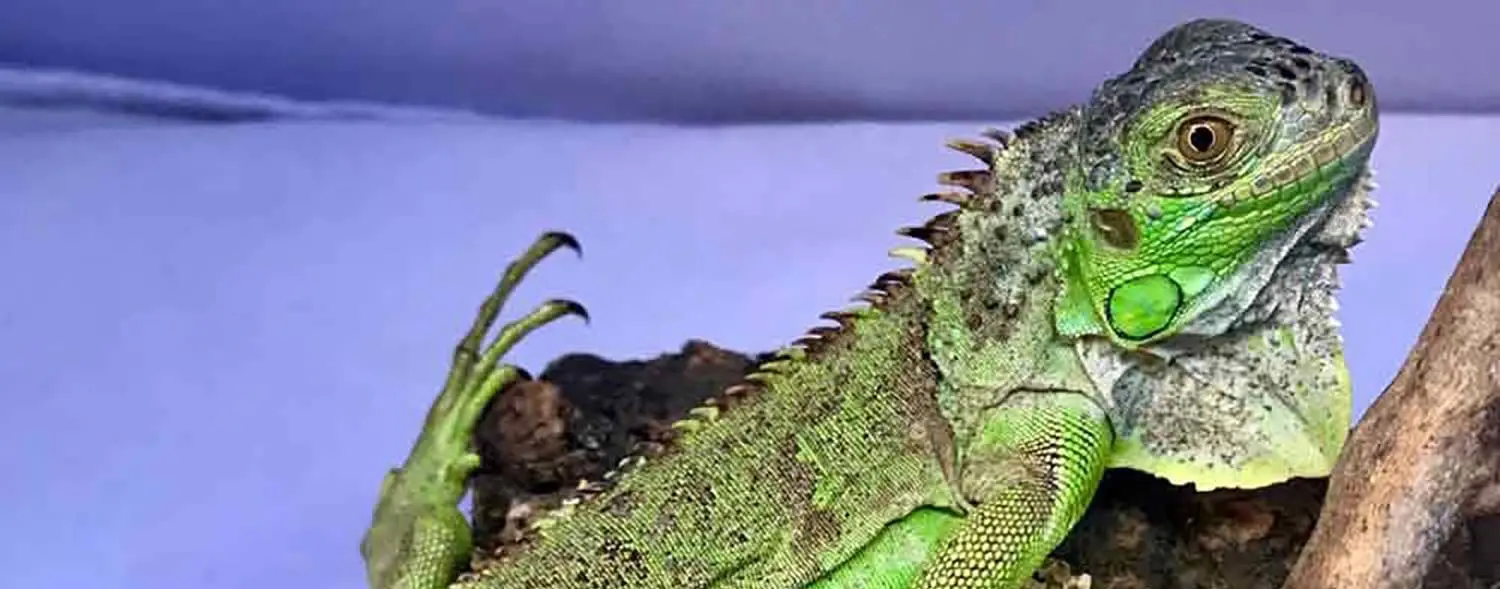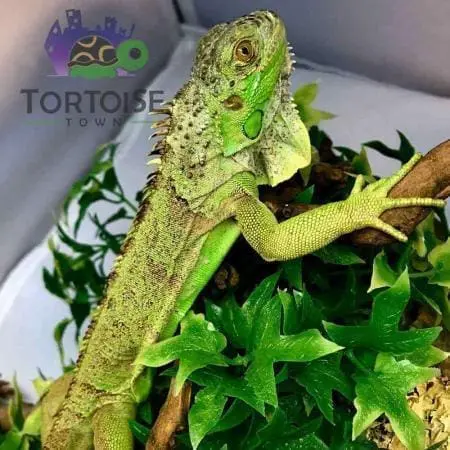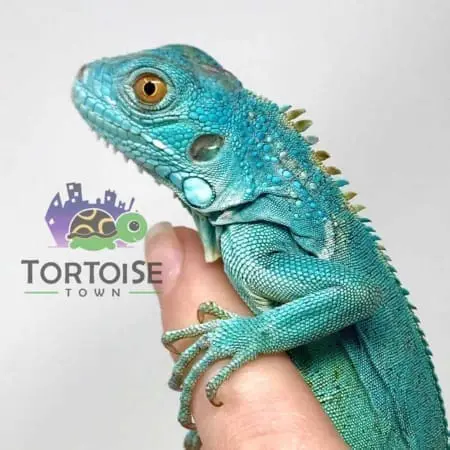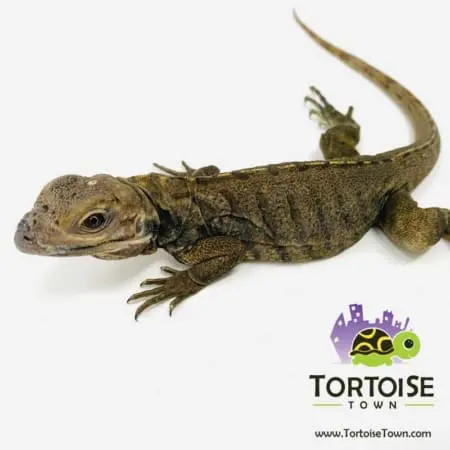Iguana Humidity
Pet Iguana for sale | Humidity
Like all reptiles, controlling the humidity for your new baby or adult iguana is important and cannot be ignored. Iguanas for sale at pet stores are often kept at the wrong humidity. Becuase of this, you will see them missing parts of their toes for bad sheds for example.
Pet Iguana Shedding and Humidity
Without proper humidity, iguanas cannot shed correctly. You will see patches of stuck dead old skin, leading to marks, or overall skin damage. Without proper humidity, the iguana shed will not all fall off evenly and most of the time get stock between fingers and toes.
Baby and Adult Iguanas also need high humidity in their cage. Humidity for all iguanas should be kept at around 75% . Looking for how to increase humidity? Easy! You can increase the humidity of the iguana habitat by providing your iguana with a large pool of water, or by purchasing a mister. You should mist your baby iguana at least twice a day to increase the humidity and to promote proper shedding and overall skin health.
Pet Iguanas for sale online
Pet Iguanas for sale are some of the most popular pet lizards for sale in the world. Whether it be a blue iguana for sale, green iguana for sale, or even a beautiful baby Rhino Iguana, keeping iguanas is fun if you are properly prepared. Guiding you thru owning an iguana is our wonderful iguana care guide.
Our biologist has written our iguana care sheet with the beginner reptile keeper in mind. Owning a baby iguana for sale is a big step in the reptile world. Sure, your new iguana is small and cute, but not for long! Depending on the species of pet iguana you purchase, it can be large and in charge in no time without proper keeping and handling. A Rhino iguana for sale is one of the largest species of iguana kept as pets. Rhinos are super smart and “dog like” in personality once tame.
Iguana UVB Lighting
Most keepers provide the iguana both heat and light thru the same element. Keeping a heat lamp and a UVB lamp is also ok, and normally used in larger setups. A Basking lamp is great, but does it produce enough UVB as well as UVA? Using a UVB Tube in addition to a mercury vapor basking lamp will ensure you are completely covered regarding lighting. Iguana care sheets should always have an in-depth look at the important of UVB lighting for both heat and light exposure purposes. No matter the color iguana, whether it be a blue iguana for sale, or rhino iguana for sale, UVB is super important.
Using a tube style UVB lamp will cover more than just a basking area as it should. Providing a tub UVB lamp will provide a great gradient for your Iguana to move in and out of. This will enable your baby iguana for sale to get different amounts of UVA and UVB. We recommend a 10% or 10.0 lamp, if mounted 18″ from the ground. Using a T5 HO fixture is recommended. You can purchase them direct on our website. Also, always remember to replace your UVB bulbs and basking lamps at least every 6 months.
Keep in mind that UVB helps Iguanas synthesize vitamin D3, which is needed to help metabolize calcium in your new baby Iguana’s diet. No Iguanas cannot process the vitamin D3, therefore they require a strong UVB lamp to help their bodies produce and metabolize Vitamin D3. Without a UVB source and Vitamin D3, Iguanas will be unable to process calcium properly. If you are not providing correct lighting your new baby iguana will be susceptible to Metabolic Bone Disease, an often fatal result of calcium deficiency coupled with lack of proper lighting. Consider UVB lighting one of the most important parts of an iguana care guide.
Different brands of UVB Iguana lights produce different results
Several types of UVB producing bulbs are on the pet lighting market. Some of the best include ZooMed’s Iguana Light 5.0 and Reptisun 5.0, as well as T-Rex’s Active UVHeat bulb and ZooMed’s PowerSun. The first two are fluorescent-style tube bulbs that require a special fixture. The second two are mercury vapor lights that produce both heat and UVB. These fit in a regular dome light socket, but produce a lot of heat and require a ceramic socket. Most tube-style UVB bulbs lose their effectiveness in about 6 months, even though they still produce light. The Active UVHeat bulbs last at least a year, and provide heat as well as the needed UVB.
UVB dissipates with distance and can be metered as such using a Solar meter. Be sure your iguana is able to get close enough to the UVB lighting for it to be effective. Mercury vapor lamps should be 12-18″ away where as T8 can be 10-12″ and T5 15-24″ depending on if you are using a 10% or 12% uvb lamp.
Buying the right UVB lamp for your pet iguana
Be careful when shopping for a UVB bulb. Many manufacturers advertise their bulbs as ‘full spectrum’ even though they do not produce UVB. Make sure you purchase a bulb that specifies UVB production. The bulb should state that it produces at least 5% UVB. Read the packaging carefully. Several people have had problems buying lights that state they produce UVB (especially the new coil style UVB lights) but they do not produce enough UVB to keep the iguana healthy. Many of these people are now treating their iguanas for MBD. Grow Lights, lights made for aquariums, and plant lights are NOT UVB producing lights.
Be aware that UVB can be ‘diluted’ or blocked by many things. Lastly, use common sense. UVB rays cannot pass through glass, and if they do, it cuts down on the output significantly. The same thing applies to plastic and plexiglas. Make sure that your iggy can get direct UVB lighting without anything blocking it. Also, as you would think, screens and mesh can also block or filter UVB rays. Last but not least, when planning your iguana habitat setup, try to find the larger sized mesh available. With proper understanding, providing the right UVB Light for your new baby iguana for sale can be easy, and rewarding.
Iguana Lifespan
Well cared for pet iguanas may have a lifespan of approximately 10-15 years
Iguana Habitat
When it comes to the size of your new pet iguanas habitat, the bigger the better. Basically go with the largest sized iguana setup you can build or buy. Also, consider the largest you can fit as well. So the biggest that you can fit and largest you can afford is the best option. Consider that your once tiny pet iguana for sale will one day grow. When your Iggy grows to 3-4 feet, he or she will need some space to unwind and relax and enjoy a happy lifestyle. Consider that you could make a killer looking habitat for little money with the right plants, fake or live trees, vines and the like. Controlling humidity can be done with a reptile fogger like the one we sell here at TT.
Iguana Care Guide – Iguana Habitats for sale
Iguana habitats for sale are often also marked or sold as chameleon habitats. We recommend the large Reptibreeze iguana habitat. The XL size is 4x2x2 ft in overall size. Using the larger will enable your iguana to both bask and cool properly as the larger environment lends to a larger thermal gradient. Thermal gradients are important for all reptiles which use the cool and hot areas of their environment to regulate body temperature.
Iguana Temperature
Temperatures should be between 75 and 92 degrees. A Basking area of 89-95 should be provided during the daylight hours. If your home or area your habitat is kept gets cool at night, you may need to add some alternative nighttime heating to your iguana habitat setup. Normally providing a UVA/UVB Basking lamp is sufficient, but again keep in mind where you keep your habitat beings indoor etc. If you are keeping your setup outdoors, be sure you live in the right climate to keep a pet iguana outdoors in.
Remember, like all reptiles, Iguanas are ectothermic, meaning that they rely on their environment to regulate their temperature. For this reason, Iguanas require a higher temperature in their enclosures. Try to dial in your setup with a basking spot 95°F to 100°F. The cooler end of the cage 80°F to 85°F.
Handling a Pet Iguana
Handling Iguana owners should learn to read their pet’s body language because it can provide hints as to whether the iguana is friendly or is about to attack. Iguanas use their tails as their first line of defense when they feel threatened.
How to avoid being tail whipped before your Iggy is tame!
Remember, scared or untame Iguanas can bite and have strong jaws and sharp teeth. When you are new to handling your iguana, be sure to avoid putting your hand near his or her mouth. Iguanas can bite, and do have teeth. While it is rare, a scared Iggy can be dangerous for those who do not respect it.
Also, iguanas have long fingers and claws that help them to climb. For this reason, your new pet iguana may accidentally scratch you if allowed to climb on or around you. Putting in the time is worth while. For those that are handled often, most baby iguanas become very tame and friendly with their owners.
Handling your pet iguana is key to having a tame pet!
When handling an iguana, you should always be cognizant of where its tail is, so that you can avoid being struck. Iguanas should be held with two hands; it is useful to support their body weight with one palm under the belly and to use your other hand to secure the shoulders and neck. In this position, you can tuck your iguana’s tail under the arm that is supporting its body, so that the tail is held securely against you.
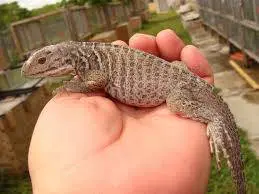
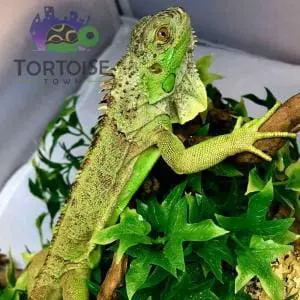
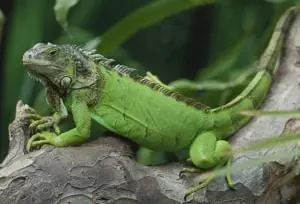
- Display 21 Products per page

